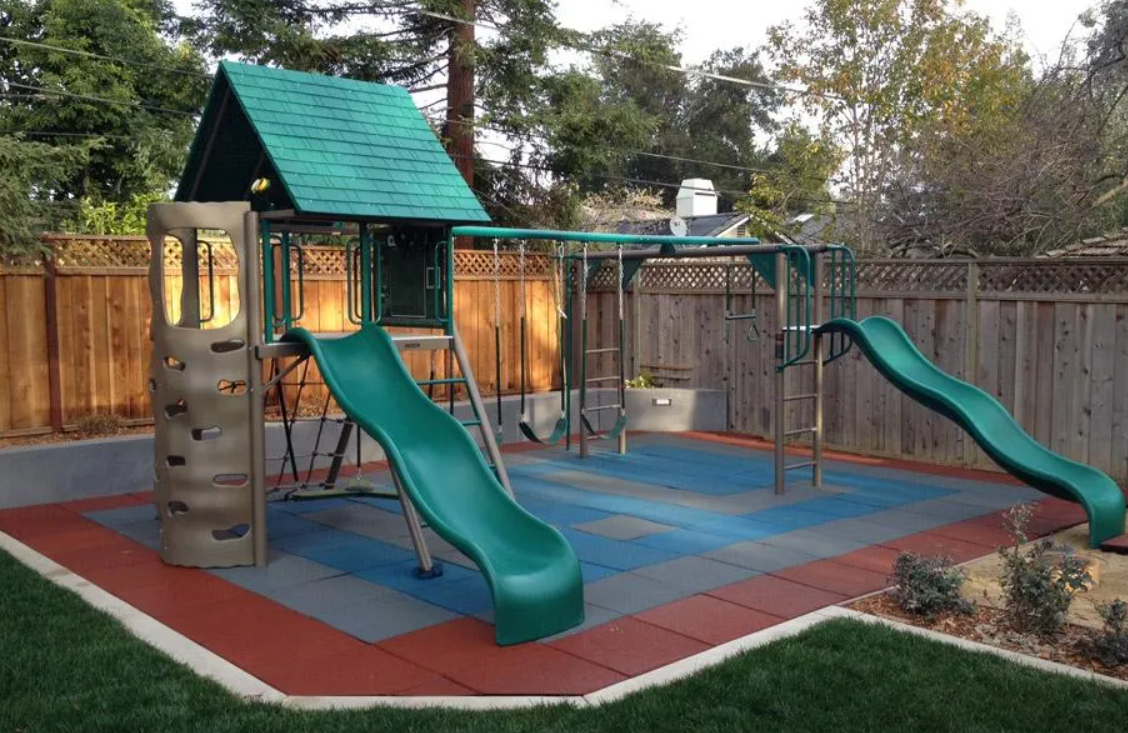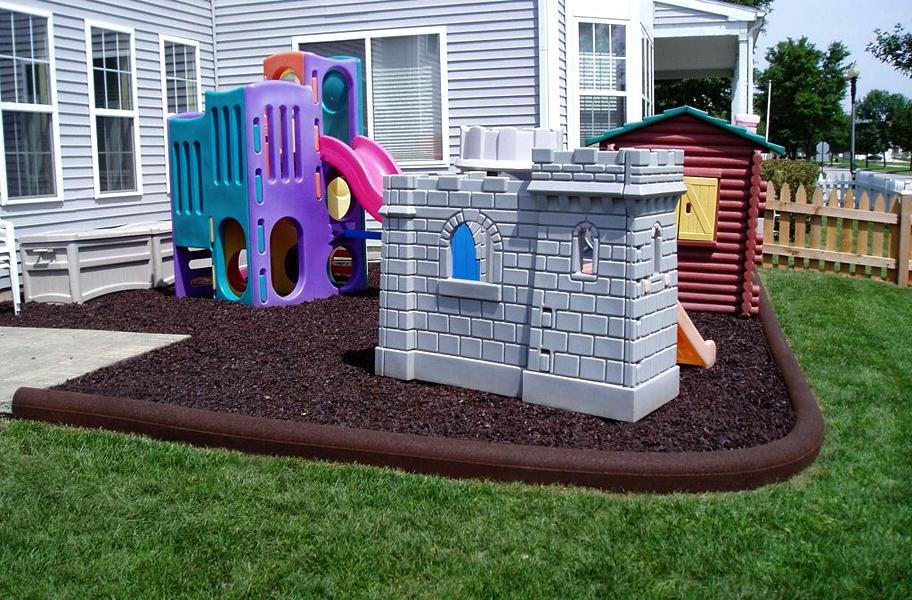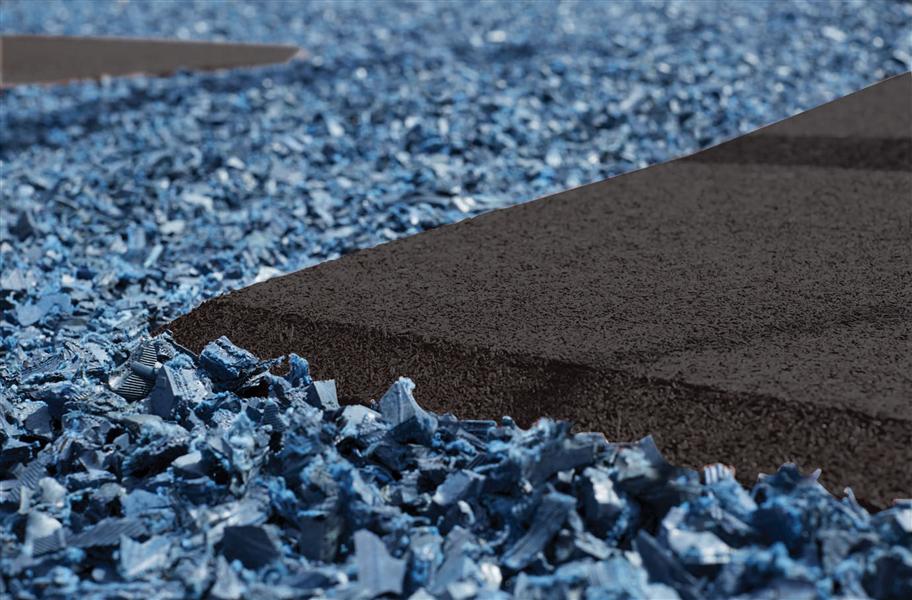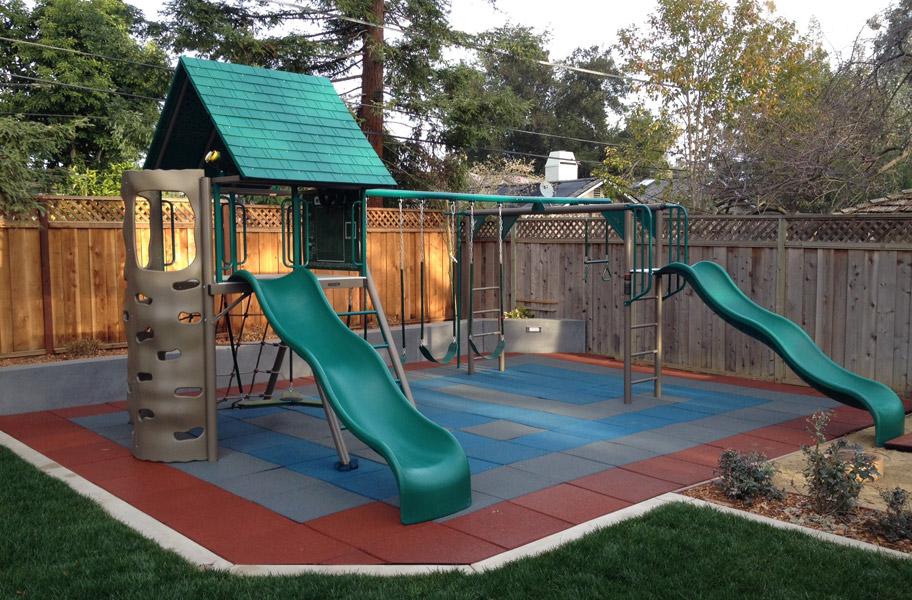
Deciding on the right playground flooring can be overwhelming. When children’s safety is at stake, you want to be 100% sure about the product you purchase. Get all your playground flooring questions answered right here to make your decision easier.
Are you considering what type of surface you need for a playground? Whether you want to cover a small backyard area for your kids or a larger space at a school or park, you’re going to have questions. Playground flooring isn’t like buying a new shirt (which can still be tricky) - it’s a product that comes with safety specifications and a heftier price tag, so it takes some deliberation.
If you’re in the market for outdoor playground flooring, you’ve come to the right place. This guide will cover the most frequently asked questions we get from concerned parents and playground enthusiasts. You’ll have everything you need to make a better-informed decision.
Let’s start with an overview.
Playground Flooring Overview
Playground flooring is specially designed with safety and shock absorption in mind to keep kids active and safe, and parents worry-free. You can surface a playground in rubber tiles, mulch, mats or synthetic turf. If you're still curious on the pros and cons of these outdoors playground flooring options, check out our Playground Flooring Buying Guide.
Use and Durability
Before you purchase a playground floor, you need to know just what kind of play your playground is going to be seeing. This will help you determine the best type of floor for your playground type and whether or not it can hold up to the traffic and level of play those rascals are getting into.
What is the best material to use under a swingset?
Playground Floor Tiles or Rubber Mulch are the safest and most durable material to use under a swingset or other playground equipment. Playground floor surfaces needs to be shock-absorbent to protect a child from injury if they fall, and rubber is about as shock-absorbent and durable as it gets when it comes to flooring.
For a swingset specifically, you may want to consider a Playground Swing Mat for a nice visual aesthetic. Rubber Mulch is also common under swings to give the ground a more earthy look while keeping children safe.
Related content >> Rubber Flooring FAQ: Your Questions Answered
Can I use regular mulch for a playground?
We do not recommend using regular mulch for a playground. Gardening or landscape mulch is made from different materials than rubber playground mulch, and they will not provide the same protective qualities if a child were to fall.
Playground mulch should act as a buffer between a child and the ground. It will also need to be durable enough to stand up to heavy traffic. Rubber playground mulch is attractive, comes in many colors, and won’t absorb water or blow away like wood chips.
It’s also super easy to maintain. For kids on playgrounds, rubber playground mulch keeps them safe when they’re being daredevils. Since rubber mulch doesn’t break down, your playground area will look great all year around.
Safety
The most important factor when purchasing playground flooring is ensuring that the product is fall height certified. Don’t worry, we’ll explain what that means.
What does fall height mean?
The fall height is the highest point a child can safely stand on. If your playground flooring surface is fall height rated for 4′, that means the child can fall from 4′ without serious injury.
How is fall height tested?
Fall height is determined by testing the shock absorbency of the flooring. Manufacturers perform tests that replicate a child falling from various heights to determine a height that a child can fall from without experiencing a serious injury. This helps the playground owner pair the best equipment with the right flooring to create the safest environment.
Historically, the test has been done by dropping a ball form representing the head of a child onto the center point of a floor tile. However, the International Play Equipment Manufacturers Association (IPEMA) recently changed the testing procedure so that the ball form is now dropped on the edge of the tile, the weakest point of the product. Playground flooring manufacturers must perform six tests and can only list the lowest fall height rating received.
Related content >> Playground Flooring Safety: The Ultimate Guide
What is the recommended fall height?
If a product has a lower fall height rating or has seen a significant drop in its rating, it doesn’t necessarily mean the product isn’t safe. The most important factor when purchasing playground flooring is ensuring that the product is fall height certified at all.
While a 6′ fall height rating is standard for most commercial playgrounds, residential and backyard play areas can get away with a product that has a lower fall height rating, such as 1’ or 2’. Typically, thicker tiles = higher fall height, meaning you can use higher playground equipment.
What is the safest playground material?
Rubber playground tiles are among the safest playground materials. They’re durable and stay in place so you won’t have to worry about the thickness changing the way it can with playground mulch. Durable, resilient rubber makes an excellent smooth surface that is sturdy enough for running and playing but cushioned enough to be safe for falls.
SHOP RUBBER PLAYGROUND FLOORING
Shopping
Finally, what you really want to know - how much will playground flooring cost? Let’s break it down.
How much does playground surface cost?
Playground flooring ranges in price from under $2/sqft all the way to over $10/sqft. There are many variables that factor in to determine cost. Our most popular playground flooring typically runs around $5.50/sqft.
Our rubber mulch costs $8 for a 39-lb. Bag, or you can buy it in bulk if surfacing a large playground. Rubber mulch and playground mats are priced by the product rather than square footage. Playground mats run from $50.99 - $138.99 per mat.
The good news is, rubber flooring is super DIY-friendly so your cost (typically) just comes down to materials and shipping.
Installation
Playground flooring is one of the easiest flooring options to install. Here are a few popular questions on the installation process.
How do you install rubber playground flooring?
Playground tiles can be installed by any DIYer. First, check out this video:
How playground tiles are installed depends on the thickness.
- 1” tiles are typically installed with a dowel system. Dowels are little plastic pegs that are inserted into the playground tile. This is very similar to putting together IKEA furniture, and everyone knows how fun and simple that is!
- 2.5” and 3.5” tiles are typically installed with some type of clip. Place the clip underneath the tile and lock it around the feet of the adjoining tiles.
- For tiles 4” and above, we recommend gluing the playground tiles. Since most applications of these tiles are outdoors, they need to be glued to each other at the seams. We recommend a Polyurethane Glue for rubber playground tiles.
We also have interlocking playground tiles which are by far the easiest to install and don’t require any glue or extra tools for installation. To help alleviate movement in your floor, we recommend placing a small bit of adhesive in the interlock. This will ensure a tight bond between the tiles and will help to reduce expansion and contraction.
How do you cut rubber playground tiles?
Rubber playground tiles are thick, so it’s best to use a bandsaw when cutting them. However, if you’re using a knife, we recommend a large bread knife. Be warned: This method takes a lot of elbow grease.
Cleaning & Maintenance
Here’s what to know on how to clean playground flooring and maintain a sanitary, safe space for kids to play.
How do you clean playground flooring?
Maintaining your playground tiles is also a breeze. All you need is a blower and a garden hose or broom to bring them back to their novelle glory. For commercial playgrounds, you may want to perform a routine cleaning with a power washer (not to exceed 2000psi) or scrubbing machine and mild detergent (non-petroleum base) to maintain an attractive and long-lasting appearance.
Note: Do not use any solvent or oil-based cleaners such as Pinesol, Lysol, Murphy’s Oil Soap, WD40, paint thinner, etc. These types of cleaners will break down the outdoor playground rubber surface over time.
Miscellaneous
From curious questions to legal and moral concerns, here are a few more common question customers.
What are playground floors made of?
Our playground tiles, mulch and mats are made of recycled rubber. Rubber flooring is mold and mildew resistant. Playground tiles are porous, allowing water to easily penetrate through the floor so there’s a dry surface even after heavy rain.
How do I make my playground flooring ADA compliant?
All of our playground tiles come with accessories that make it easier for everyone to enjoy. Playground accessories include ramps, corners (both inside and outside) and ADA ramps.
Is rubber playground flooring eco-friendly?
Absolutely! In fact, most outdoor playground flooring options are made from recycled rubber.
Additionally, almost all of our rubber flooring options are made right here in the USA. Choosing American-made product reduces your carbon footprint by reducing carbon emissions associated with transportation, according to Recyclebank.
Now that you've got all the details, it's time to choose your playground flooring! Check out our Playground Flooring Buying Guide or order samples today to get started.





